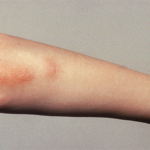When uric acid becomes elevated in the human body, a variety of problems can develop, most notably gout—a painful, inflammatory arthritis caused by uric acid crystal deposition in joints. Chronically elevated uric acid can also lead to painful kidney stones. The majority of patients found to have hyperuricemia, however, never go on to develop gout…







